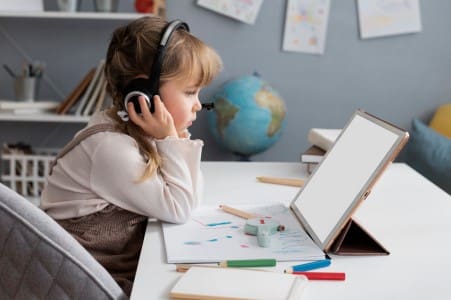Dr. Atiqa Kelsy
Head-Department of English, St Xavier’s College-Jaipur

There is nothing permanent but change!
I begin with a cliché because nothing defines the chaos that the current pandemic has unleashed more accurately than this. With the world coming to a standstill, systems getting dysfunctional, structures getting dismantled, the only permanent and reliable thing we see around is change. Our education system seemed most resilient to change because it seemed far more comfortable and stable rather than stepping into unknown waters with such unpredictability that bordered on being threatening. Then came March 2020 and academia was thrown in the cauldron of pandemonium full of uncertainty that the new space called Virtual Space or Remote Learning created.
Whether we now like it or not, this new learning space is here to stay and the sooner we adapt to it, the better before we are forced to! Learning and Teaching seem to have travelled far from the very sacrosanct space at the feet of the Guru under a tree or walking around an academy to a classroom set up where the teacher continued to have a privileged space physically demarcated in the structure.
With the entire world going virtual last year, academic institutions had no choice but to conduct classes and exams, hold webinars, host curricular and co-curricular activities virtually. The new learning space should neither shock nor disgust us. With the internet and smartphones, every bit of privacy had been nibbled away as every nook and cranny of our private life flooded with gadgets. Education is thus no exception.
The challenge is how do we as teachers take this change? How do we adapt to it? How do we manage it? How do we also handle the paradigm shift in terms of authority and other visible equations that were self-evident in the physical interaction? The new learning space has shattered the sanctity of the entire teaching-learning process as the student is out of the teacher’s reach.
The physical distance where the teacher and the student are only connected virtually has created a chasm of doubt and uncertainty on both ends. The tables have been completely turned. The teacher now puts in more effort in this knowledge transaction. We need to try and make sense of it as learning cannot stop and change is inevitable.
We need to look at the new universe of possibilities the virtual learning space offers to both teachers and students! There is so much to learn and so much already being offered. The danger for the more ambitious ones is to get lost in the maze of learning and for the already distracted and least focused ones is to get addicted to the distractions that the virtual world offers.
We can make use of this opportunity to experiment with the various tools that technology has made possible to make Remote Learning goal-oriented. As teachers, we need to play with these tools, try and test them and then maybe select the ones that suit our needs best. From online whiteboards to quiz makers to bingo card generators to homework tools, we have a world of possibilities. Let us take time out to explore these tools, try them and then use them in our classrooms to make learning fun and output-oriented. Instead of shunning social media, let us use it to start discussions, nudge students into thinking by posting prompts, create discussion forums and turn netizens into versatile global citizens who are ready for whatever comes their way! As teachers, we still have to power to change the world and it starts with us and our classroom!


